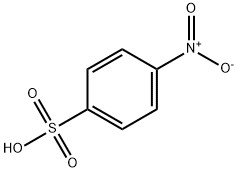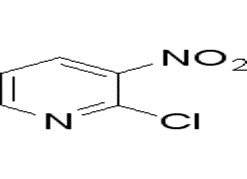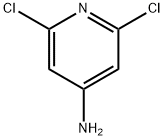4-nitrobenzenesulphonic acid(CAS#138-42-1)
| Risk Codes | 36/37/38 – Irritating to eyes, respiratory system and skin. |
| Safety Description | S37/39 – Wear suitable gloves and eye/face protection S26 – In case of contact with eyes, rinse immediately with plenty of water and seek medical advice. |
| UN IDs | 2305 |
| HS Code | 29049090 |
| Hazard Note | Corrosive/Irritant |
| Hazard Class | 8 |
| Packing Group | II |
Introduction
4-nitrobenzenesulfonic acid (tetranitrobenzenesulfonic acid) is an organic compound. The following is an introduction to some of the properties, uses, preparation methods and safety information of 4-nitrobenzene sulfonic acid:
Quality:
1. Appearance: 4-nitrobenzene sulfonic acid is a light yellow amorphous crystal or powdered solid.
2. Solubility: 4-nitrobenzene sulfonic acid is soluble in water, alcohol and ether solvents, and insoluble in most organic solvents.
3. Stability: It is relatively stable at room temperature, but it will explode when it encounters ignition sources, high temperatures and strong oxidants.
Use:
1. As a raw material for explosives: 4-nitrobenzene sulfonic acid can be used as one of the raw materials for explosives (such as TNT).
2. Chemical synthesis: It can be used as a nitrosylation reagent in organic synthesis.
3. Dye industry: In the dye industry, 4-nitrobenzene sulfonic acid can be used as a synthetic intermediate for dyes.
Method:
4-Nitrobenzene sulfonic acid is usually prepared by the reaction of nitrobenzene sulfonyl chloride (C6H4(NO2)SO2Cl) with water or alkali.
Safety Information:
1. 4-nitrobenzene sulfonic acid is explosive and should be stored and used in strict accordance with safe operating procedures.
2. Exposure to 4-nitrobenzene sulfonic acid can cause skin and eye irritation, and protective measures should be taken if necessary.
3. When handling 4-nitrobenzene sulfonic acid, contact with flammable substances should be avoided to avoid fire or explosion accidents.
4. Waste disposal: Waste 4-nitrobenzene sulfonic acid should be disposed of in accordance with local regulations, and it is strictly forbidden to dump it into water sources or the environment.








